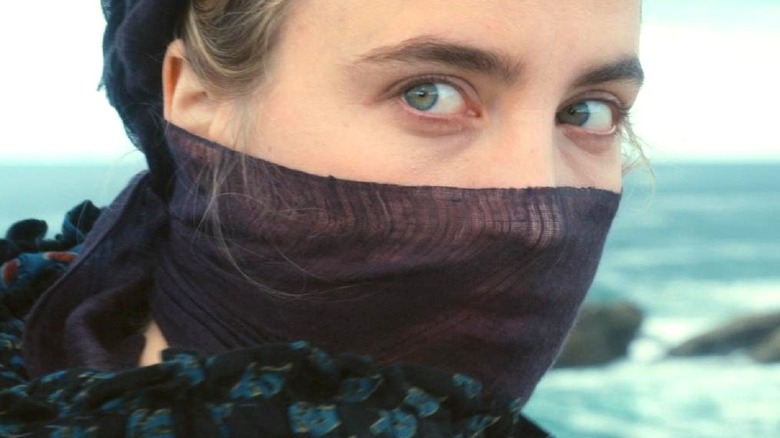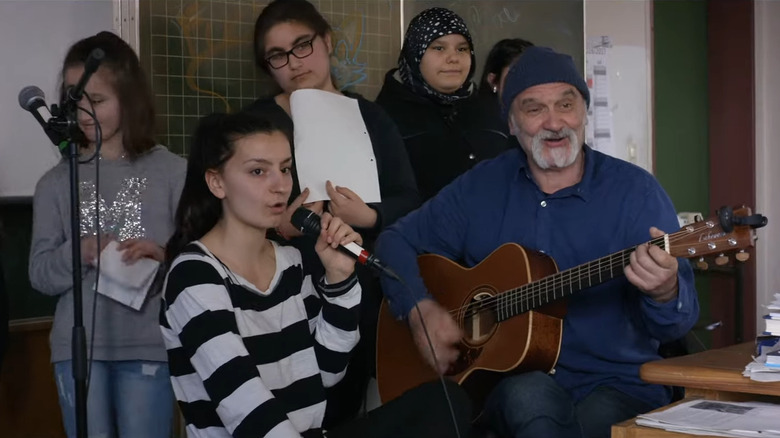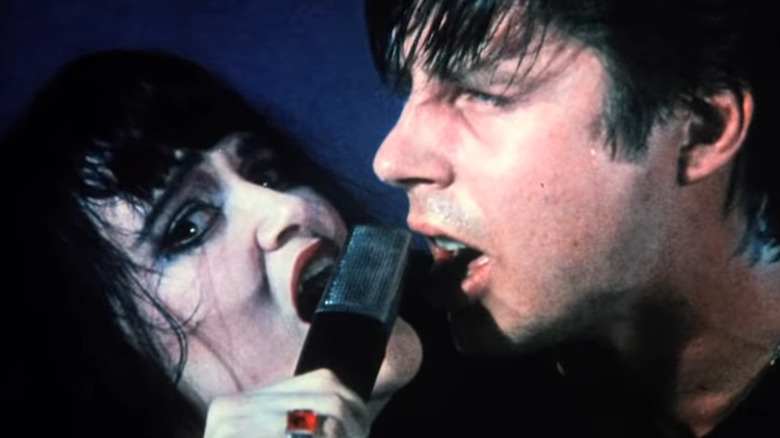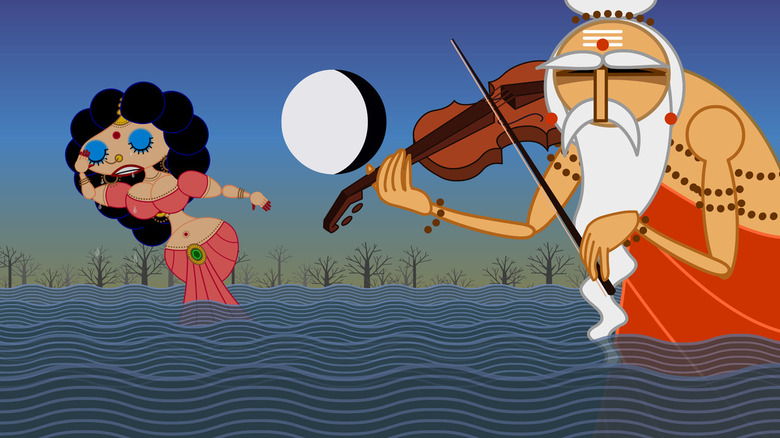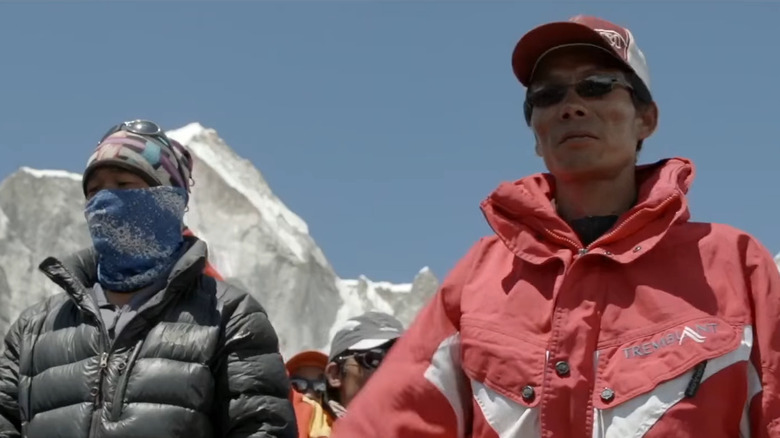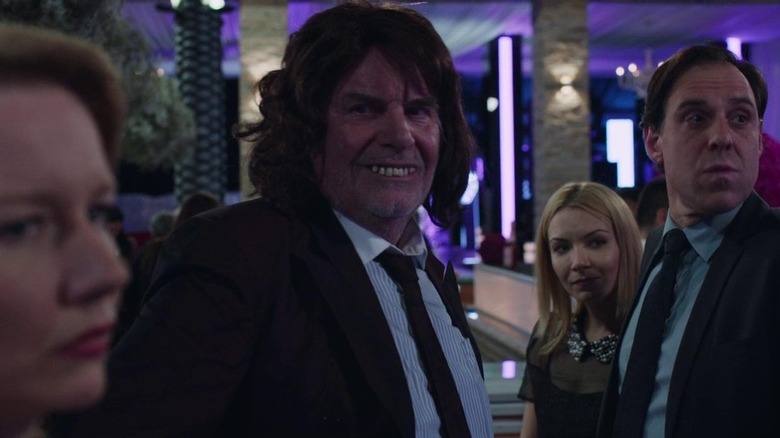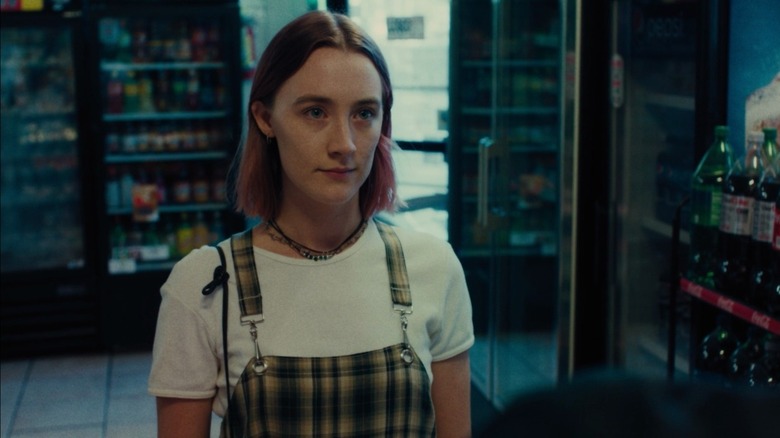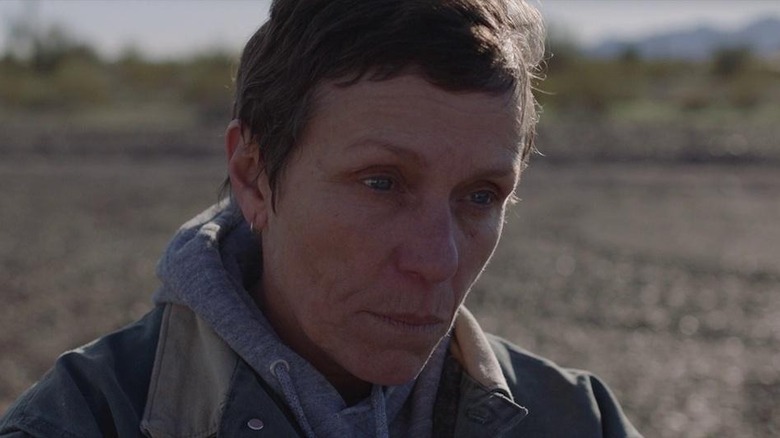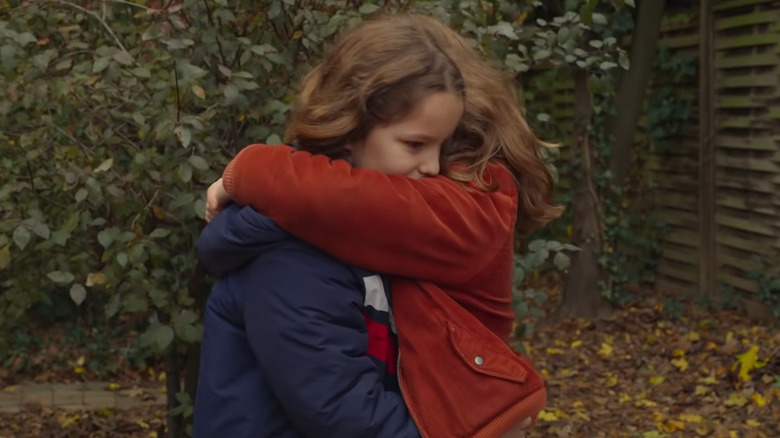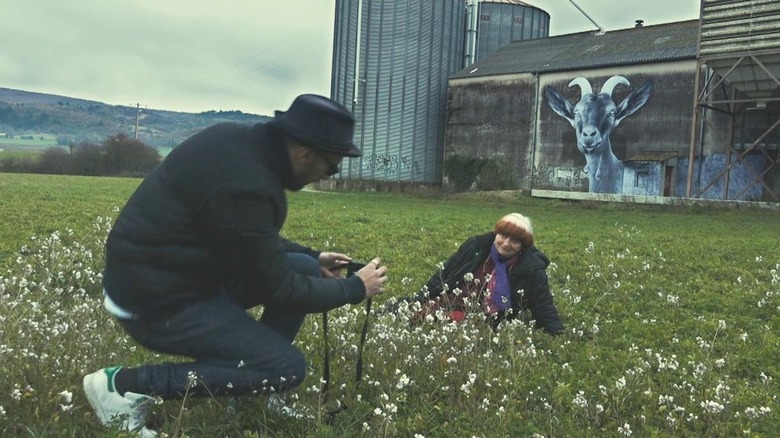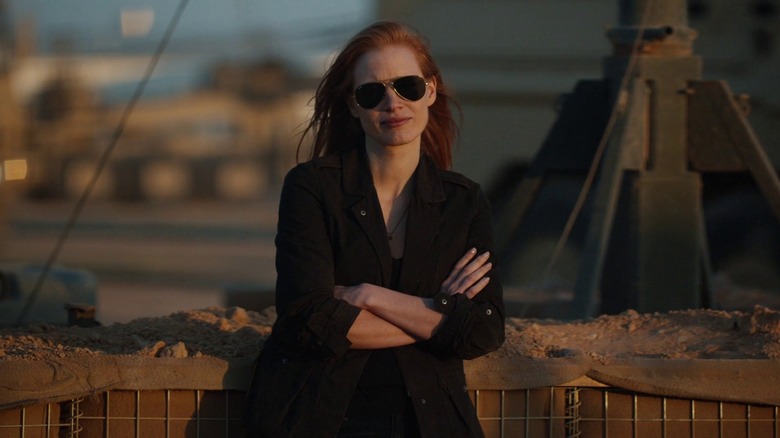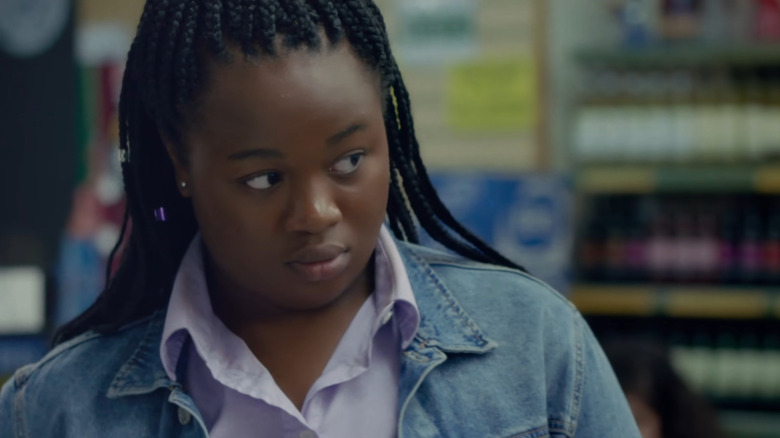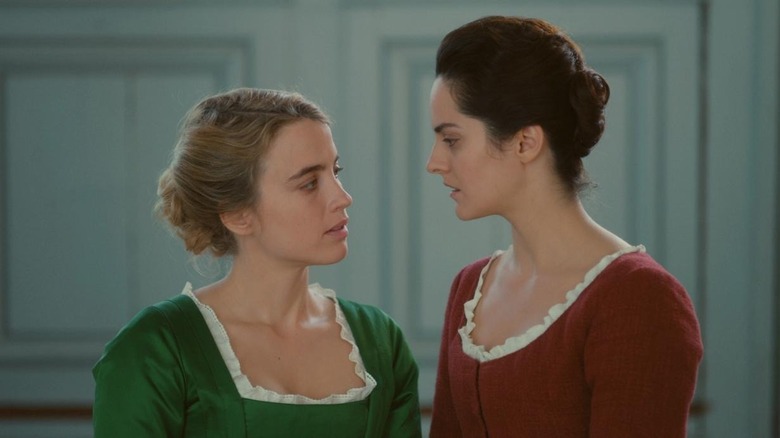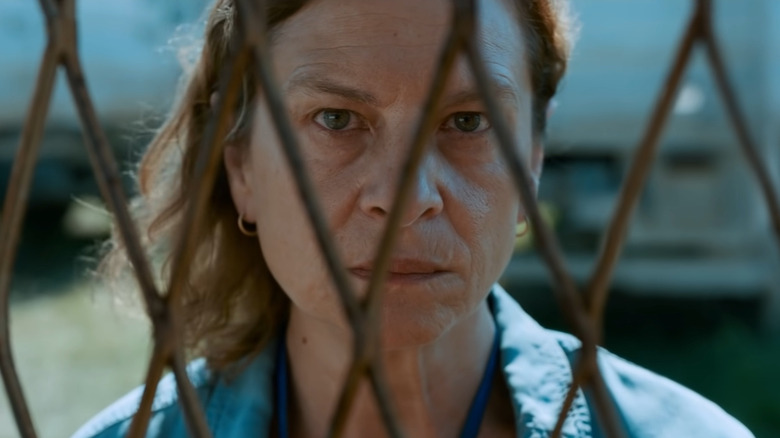The Best Female-Directed Movies Of All Time
Though directors like Alice Guy-Blache have been integral figures in the world of film dating back to the 1890s, female directors still make up a frighteningly small portion of modern-day filmmakers. In 2021, women were in charge of only 17% of the 250 biggest movies of the year. This is, unfortunately, not an anomaly and instead a byproduct of how the film industry has often kept women artists and their voices at bay. Time and time again, women directors, particularly those of color, have to fight extra obstacles just to get their films to even exist, let alone be seen by the broader public.
Even in the face of these enormous challenges, though, many movies directed by women have managed to leave a profound impact on the language of cinema. These projects range wildly in genres, mediums, and tones — a testament to how there's more than one mold for female artists to operate in. And today, we're here to celebrate the cream of the crop, looking at the best-reviewed films directed by women. The vibrant artistic accomplishments of these projects speaks to the urgent necessity of making room for female filmmakers, as well as for greater awareness of such projects in the indie and global cinema scene.
14. Mr. Bachmann and His Class
Those coming in to "Mr. Bachmann and his Class" cold may be understandably daunted by its 217-minute runtime and not give any other aspect of its production another thought. But once you actually delve into the film, the runtime becomes immaterial as you'll doubtlessly be gripped by director Maria Speth's documentary about an elementary school teacher trying to make his classroom feel like a home for his students, who hail from all over the world. Though they live in a German city that's often hostile to other cultures, Mr. Bachmann is here to present a more inclusive vision of teaching.
The prolonged runtime offers Speth a chance to dig deep into Bachmann's teaching style and have the camera catch the finer nuances of the personalities of his adolescent students. Critics have praised these tiny details and countless other aspects of "Mr. Bachmann and his Class," but there's an especially common refrain for how Speth refuses to turn this into a motion picture that settles for easy hagiography. Bachmann is always treated as just a human being while his acts of compassion are often intimate rather than grand gestures of kindness. Sometimes, it takes the smallest acts to make the world a better place. Sometimes, it takes a movie like "Mr. Bachmann and his Class" to remind us all of that truth.
13. The Decline of Western Civilization
Before she went on to direct mainstream comedies like "Wayne's World," filmmaker Penelope Spheeris put herself on Hollywood's radar with the 1981 documentary "The Decline of Western Civilization." The movie focuses on the Los Angeles punk music scene, a backdrop many commentators only see as a haven for debauchery (hence the title). But following iconic bands like Black Flag, Circle Jerks, and Alice Bag Band, Spheeris' camera gets to the heart of why people would become so enamored with both this style of music and the community that's cropped up around it. It's a fascinating backdrop for a movie, one that Spheeris utilized for all its potential.
Critics were mighty impressed with "The Decline of Western Civilization" for countless reasons, particularly the immersive quality of the filmmaking. Watching "Civilization," you can really feel like you're at one of these concerts, which allows viewers to get even closer to the people passionate about the punk scene. Even better, the documentary has been applauded for working incredibly well even for people with zero prior interest in punk music or anything to do with Los Angeles. Spheeris delivers something that simultaneously functions as a starter's guide to punk music and a definitive treatise on why people love this genre. No wonder she catapulted to even greater notoriety in the decades after "The Decline of Western Civilization."
12. Sita Sings the Blues
While animation has largely been dominated by male voices, there have been plenty of prominent women who've delivered remarkable feature-length accomplishments in this medium, dating back to the 1930s. Case in point — the 2009 feature "Sita Sings the Blues" from director Nina Paley. A retelling of the Indian story "Ramayana," "Sita Sings the Blues" concerns a goddess named Sita being separated from her husband, Rama, as well as the exploits an animator named Nina. The past and present collide in a compelling fashion that takes full advantage of all the heightened possibilities of animation.
Critics were captivated by the bold creative spirit of "Sita Sings the Blues," particularly in how original it is in terms of its visuals and complicated tone. The film's ability to mix quasi-autobiographical elements related to the director with the narrative cornerstones of an ancient myth has also been frequently praised. Even better, "Sita Sings the Blues" is regularly held up by critics as an example of all the creativity that's possible in indie animation. While this medium is often used for hollow and noisy stories aimed exclusively at kids, Nina Paley's 2009 feature is a reminder of all the possibilities that exist within animated storytelling.
11. Sherpa
Documentaries are interesting creations because, oftentimes, directors end up making a vastly different movie than the one they set out to make. In trying to capture reality, the unpredictability of everyday life rears its head and will ensure that your documentary becomes a completely different animal. In the case of 2015's "Sherpa," director Jennifer Peedom was already making a movie about Sherpas that work on Mount Everest when suddenly an avalanche occurred on Everest and took the lives of 16 Sherpas. Suddenly, the production took a whole new angle in showing the treatment these people endure at the hands of foreigners and the local government.
Even if "Sherpa" wasn't exactly the movie she set out to make, Peedom ended up crafting something that was greeted with open arms by critics. Much of this praise fixated on the incredible imagery that the director captured in filming a documentary on Mount Everest, but there was more than gorgeous imagery fueling the praise of "Sherpa." Critics also expressed astonishment at how the film incorporated the tragic avalanche into its story, as well as how well it dived into the individual lives of several different Sherpa. Above all else, "Sherpa" is a cinematic testament to what happens when directors let go and just let the natural course of life guide their camera.
10. Toni Erdmann
Father/daughter relationships can be complicated. Winifred (Peter Simonischek) knows this better than anyone thanks to how strained his dynamic with his daughter, Ines (Sandra Hüller), has become. To try to repair their broken bond, Winfried decides to give her a surprise visit just as Ines is embarking on an important assignment for work. Their rapport only becomes more contentious once Winfried puts on the alter ego of Toni Erdmann in an attempt to get even closer to his daughter. There's no shortage of awkward conversations and even more perplexing instances of human behavior throughout "Toni Erdmann," though that commitment to the strange and cringey is partially what's made this movie so critically acclaimed.
Praise for "Toni Erdmann" also largely hinged on the film's pair of central performances, which were seen as essential for making the movie work as well as it did. There was particular praise for the way director Maren Ade made sure that Hüller's character got just as much depth and weirdness to navigate as the film's male lead. The script's ability to constantly generate big bold narrative swings was another oft-praised aspect of "Toni Erdmann's" unique creative vision. Father/daughter relationships can indeed be complicated, but figuring out why a movie like "Toni Erdmann" is as good as it is, that's comparatively much simpler.
9. Lady Bird
Christine MacPherson, aka "Lady Bird" (Saoirse Ronan), doesn't have the best relationship with her mom, Marion (Laurie Metcalfe). Scratch that — she has a very strained relationship with her mom, one that includes Christine hopping out of a moving car just to avoid talking to her. As Christine's senior year stretches throughout "Lady Bird," we watch her not only clash with her mom but navigate friendships, dating, and college plans. Her final months of high school are rife with conflict, and writer/director Greta Gerwig lends an empathetic and insightful eye to such turmoil, not to mention incredible attention to detail when it comes to making everyone around Christine feel like a real person.
Authenticity practically radiates off the screen in Gerwig's vision of growing up a teenager circa. 2002. It's no wonder, then, that this captivating feature was greeted with critical acclaim. In her first solo directorial outing, Gerwig was praised for juggling such a complicated tale, particularly in making humorous and poignant sequences land with equal levels of profound impact. There were also numerous impressed observations on how well Gerwig functioned as a filmmaker despite having minimal experience behind the camera. Both as an outstanding demonstration of Gerwig's gifts as a filmmaker and a depiction of a realistically complicated mother/daughter relationship, "Lady Bird" absolutely soars.
8. Nomadland
Who are we detached from our possessions, our money, our home? Director Chloe Zhao explored this concept with her third feature-length directorial effort, "Nomadland." Fern (Frances McDormand) is a woman without a job or — in the wake of his recent demise — a husband. Having been attached to those two things for so long, Fern sets out to find another way to define purpose in her life. This leads her to discover the lifestyle of nomads, people who exist without a concrete home. Floating from one place to another turns out to be just what Fern needs as a person — it's also the perfect backbone to build a critically acclaimed drama on.
A common sentiment across the reviews for "Nomadland" is astonishment at how impressively this movie manages to combine intimacy with grand imagery of the American frontier. Rather than working against one another, these two seemingly disparate elements are combined gracefully under the direction of Chloe Zhao to properly explore Fern and her internal struggle for identity. McDormand's Oscar-winning performance has also been constantly praised, as well as the intimate, beautiful cinematography by Joshua James Richards. There are no easy answers to the questions "Nomadland" poses, but a movie this good is the perfect vehicle to explore those challenging queries regarding what makes for a fulfilling existence.
7. Petite Maman
For most of us, the years before we're born remain ethereal — a collection of events we'll never be able to fully comprehend, let alone experience. But unlike so many of us, Nelly (Josephine Sanz) actually gets to interact with the past in "Petite Maman." While cleaning out her mother's childhood home with her dad, Nelly wanders off into the nearby forest and stumbles across another young girl named Marion (Gabrielle Sanz). It turns out that Marion is an adolescent version of Nelly's mother, and the two get to bond like never before simply by being the same age.
Céline Sciamma has made several films about adolescent characters in her time as a filmmaker, all great movies to one degree or another. But critics were especially rapturous about "Petite Maman" and its quietly insightful nature. The naturalistic performances of the two leads and the subtly detailed production design are just two of the many outstanding aspects of this feature that critics can't get enough of. Plus, Sciamma's screenplay is able to make viewers chuckle (like in scenes where Nelly and Marion act out a detective drama) before putting a serious lump in their throats. Most of us will never get to truly experience eras before we were born but considering how great "Petite Maman" turned out, thank goodness Nelly turned out to be a rare exception to that rule.
6. Faces Places
Whether it's in her narrative works or her documentaries, director Agnes Varda has become widely associated with using her camera to examine the everyday lives of working-class people. For her 2017 documentary "Faces Place," Varda and the street artist JR set off on a road trip across France, where they decide to paint an assortment of portraits of the people they encounter. Along the way, Varda and JR grow closer and closer as friends, with their heartwarming exploits informing a movie that critics sparked to.
Of course, in her countless decades as a filmmaker, Varda has helmed several movies that have become critical darlings. But even by the lofty standards set by her most beloved features, "Face Places" is an especially acclaimed directorial effort. Critics were enraptured by how "Faces Places" showed that art can unify people across different walks of life, as well as the simultaneously poignant and wholesome friendship at the movie's center. There were also recurring observations that the deeply humanist angle of "Faces Places" made it a perfect companion piece to some of Varda's earliest works, such as her segments in "Far from Vietnam." The filmmaking fascinations of Agnes Varda have rarely been as compelling or sweet as they are in her masterpiece "Faces Places."
5. Zero Dark Thirty
After it's determined who's behind the September 11, 2001 terrorist attacks, the Central Intelligence Agency has one goal above all others: Kill Osama Bin Laden. "Zero Dark Thirty" protagonist Maya (Jessica Chastain) is put in charge of this mission, and it's one she dutifully overseas for years and years — with all that time spent chasing possible leads, being complicit in the torture of foreign citizens, and centering her life on the destruction of one human being. The first directorial effort from Kathryn Bigelow after her historic Oscar wins for "The Hurt Locker," "Zero Dark Thirty" garnered its fair share of pre-release controversy over its depiction of U.S. torture techniques. However, despite these thinkpieces, the film was greeted with a glowing reception by critics across the globe.
Part of what's made "Zero Dark Thirty" a critical darling is its willingness to eschew any sense of traditional heroics in its depiction of a global manhunt for Osama Bin Laden. Even the climactic depiction of this terrorist getting killed in May 2011 by Navy SEALs is executed under Bigelow's direction without any grandiose bombast. This commitment to a bleak tone rather than an easy jingoistic aesthetic informed many people's positive response to "Zero Dark Thirty," as did a commanding lead performance from Jessica Chastain. Throw in memorable supporting turns from the likes of James Gandolfini and it's no wonder critics were impressed by the grim accomplishments of "Zero Dark Thirty."
4. The Hurt Locker
James (Jeremy Renner), the protagonist of "The Hurt Locker," is not afraid to die. That's the vibe he puts out whenever he's working as the sergeant of a bomb disposal team. While others are understandably worried about getting blown up, James seems to only be alive when he's seconds away from potential death. Director Kathryn Bigelow captures this warped psyche and all manner of unpredictable chaos rooted in the Iraq War with 2009's "The Hurt Locker." Bigelow had often been an impressive genre movie director before "Locker," but this movie took her to a whole new place in terms of critical acclaim. In tackling headier material than anything else she'd explored as a filmmaker, Bigelow was greeted with some of the best reviews of 2009.
Much of "The Hurt Locker's" praise focused on how well the movie works as an exercise in suspense. Countless reviews talked about how the feature leaves palms sweaty, fingers digging into an armrest, and breaths being held. Bigelow's camera and the precise editing make scenes centered on defusing bombs something you simultaneously can't watch yet also can't turn away from. The characters here also deserve all the praise they received, particularly with how these are fleshed-out human beings we get invested in before the intensity really cranks up. With these and other glowing comments, it's safe to say "The Hurt Locked" exploded onto the scene as a critical darling.
3. Rocks
Teenager Olushola "Rocks" Omotoso's (Bukky Bakray) whole world changes one fateful day when her mom just goes away, only leaving behind a letter and a handful of dollar bills to help her two kids, Rocks and Emmanuel (D'angelou Osei Kissiedu), survive. From here, Rocks tries to keep her absent mother a secret from other people, lest social workers show up and separate her from her brother. Trying to juggle all the responsibilities of taking care of her sibling, being a teenager, and keeping this massive secret makes life a living nightmare for Rocks. However, her plight does ensure that the movie "Rocks," by director Sarah Gavron, is a fascinating tale of one kid trying to hold so many disparate pieces together.
"Rocks" was hailed by critics, with the realistic performances from its adolescent cast being a recurring high point of praise. The complicated tone of Theresa Ikoko and Claire Wilson's screenplay, as well as how that nuanced tone captures how volatile being a teenager really is, was also a common element praised by critics. Most importantly, though, critics were impressed by how well "Rocks" fleshes out its lead characters as complicated human beings and doesn't just define them by either their poverty or their familial troubles. The same intricate nuances of the world that makes Omotoso's life so challenging are also what make "Rocks" such an engaging drama to watch unfold.
2. Portrait of a Lady on Fire
When you initially look at it, "Portrait of a Lady on Fire" seems to be a simple movie. Much of it takes place in one castle on an isolated island with three central characters. It's not a film that's expansive in scope nor does it require thousands of extras to properly realize. Yet Céline Sciamma's masterpiece is also a dense work that's anything but simple. Functioning as an exploration of the various ways women maintain their autonomy, a captivating romance, and a visual tour de force, "Portrait of a Lady on Fire" keeps so many thematic plates spinning in the air without letting a single one crash to the ground.
Needless to say, a movie that's able to accomplish such a feat was like catnip for critics. Among its many glorious aspects, critics were especially taken with how "Portrait of a Lady on Fire" is always revealing new sides of its two lead characters. Every word these two exchange seems to unleash new depths. As the icing on top, "Portrait of a Lady on Fire's" ending shot has been universally declared to be a masterstroke that makes an already extraordinary motion picture extra special. From a distance, "Portrait of a Lady on Fire" may seem like a streamlined affair, but start unpacking its many artistic virtues and you'll discover just how layered with meaning this motion picture truly is.
1. Quo Vadis, Aida?
As "Quo Vadis, Aida?" begins, the Srebrenica massacre is well underway. Taking place in July 1995, countless citizens are trying to get to a United Nations shelter in hopes of being protected from bloodthirsty troops. Here, Aida Selmanagic (Jasna Đuričić) works as a UN translator while trying everything in her power to keep her two sons and husband safe. Writer/director Jasmila Žbanić doesn't depict gruesome violence in "Quo Vadis, Aida?," but she doesn't have to. Her visual sensibilities prove potent enough to convey the enormous loss of life happening just off-screen. Watching the packed compound suddenly become as empty as a tomb in the final scenes is enough to send shivers down your spine and communicate the harrowing scope of this genocide.
"Quo Vadis, Aida?" isn't an easy watch, but its masterful filmmaking earned it rave reviews from critics across the board. Praise was offered for, among many other virtues, how well "Quo Vadis, Aida?" reinforces the humanity of those being persecuted during a genocide. Plus, the screenplay received acclaim for quietly showing the kind of prejudice that informs these gargantuan acts of violence. Žbanić's incredible eye for visuals was also applauded, particularly in how she communicates the horrors of genocide without resorting to exploitative imagery. With all these accomplishments and so much more, it's no wonder "Quo Vadis, Aida" was deemed the best-reviewed movie of 2021 by Metacritic.
